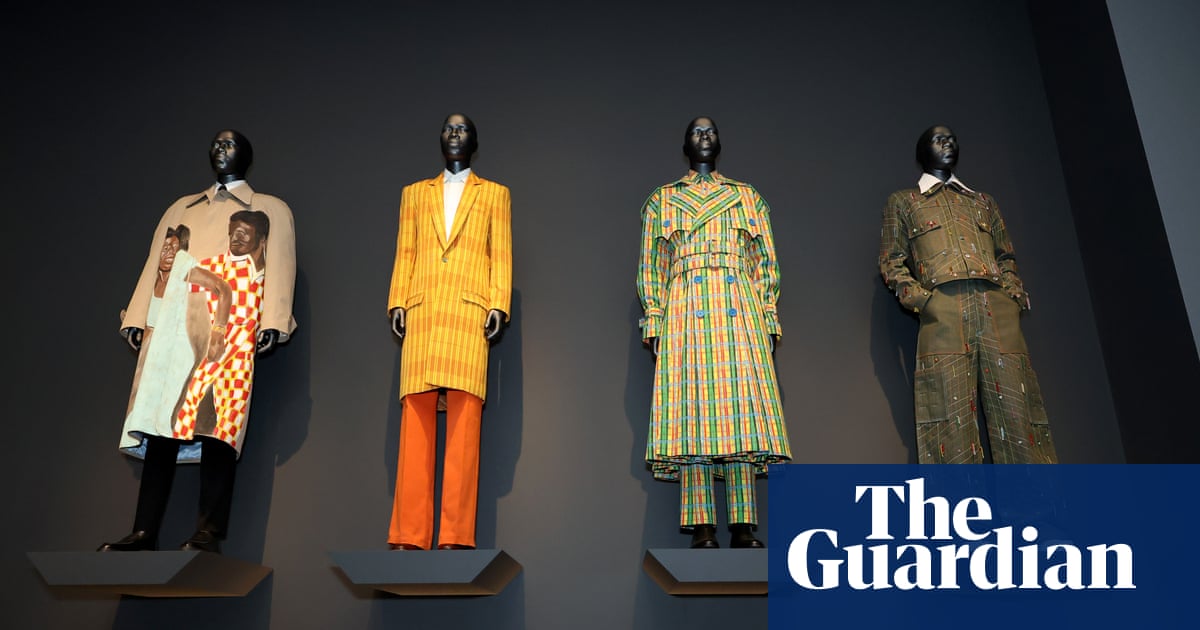For its spring 2025 exhibition, the Metropolitan Museum of Art’s Costume Institute gave itself a monumental challenge: to use fashion as a means of exploring the complexities and contradictions of Black life. More specifically, to use the expressive style known as dandyism to explore the nuances of Black masculinity.
The show, calledSuperfine: Tailoring Black Style, which opens on 10 May, attempts to do just that – and mostly succeeds. It was inspired, in part, by thedeathof Vogue’s beloved fashion editor André Leon Talley in January 2022. Talley was known in the industry for his larger-than-life personality and penchant for flamboyant luxury ensembles (capes! Louis Vuitton tennis racquets!), a combination which helped him become Vogue’s first Black creative director. In many ways, he is the very manifestation of Black dandyism, which the show describes as a person who, “studies above everything else to dress elegantly and fashionably”.
But the show is not just about Black men with a surfeit of personal style – though there are many examples of just that in it – but also an examination of how they, from the 18th century to today, have leveraged clothing as a vehicle of self-expression, agency, personhood and more. At its best, it’s that tension, between show-stopping peacockery and the introspective origins that gives this ambitious show its more potent frisson.
The exhibition was inspired by the 2009 book, Slaves to Fashion: Black Dandyism and the Styling of Black Diasporic Identity, byMonica L Miller, a professor of Africana studies at Barnard College who serves as guest curator of the exhibition alongside the Costume Institute’s head curator Andrew Bolton. At a private view on Monday morning, Bolton laid out how Miller’s book served as the exhibition’s foundation: “Black dandyism,” he said, “is both an anesthetic and a political phenomenon. [It’s] a concept that’s just as much an idea as an identity.”
“We all get dressed,” said Miller in an interview at the museum, just hours before the splashyMet Galawas scheduled to commence, explaining why fashion is such a powerful way to explore the Black experience. “When we think about Dandyism as a strategy and a tool for negotiating identity, I do think that’s something that everybody understands.”
The show presents more than 200 items – clothing as well as accessories, paintings, photographs and other ephemera – spread across 12 thematic sections which include Respectability, Disguise, Cool, Beauty, Heritage and more. In many ways, the opening ensemble, a resplendent uniform belonging to an unnamed slave from circa1840, made from purple velvet and edged in gold galoon, distills the show into a single garment. That its enslaved wearer was not a dandy of his own accord, but an object that belonged to another speaks to the history the exhibition explores.The rest of the show seeks to demonstrate how, from those seeds, Black men used fashion to reclaim their autonomy and assert themselves in culture.
Alongside the historical items are recent examples from contemporary designers of color, such as Grace Wales Bonner, Olivier Rousteing of Balmain, and Pharrell Williams of Louis Vuitton (Louis Vuitton is a sponsor of the event and Williams is a co-chair). Much like Talley, another ghost hovers over the show: that of the designer Virgil Abloh, of the brand Off-White and later Louis Vuitton, who died in December 2021, a transformative figure in the fashion world.
At various turns the show can be a history lesson, an appreciation, a cultural critique, or a reclamation of Black designers who have been sidelined from larger fashion conversations. It also addresses how Black dandyism intersects with sexuality and gender, among many other ideas. As Miller said: “The goal was to design an exhibition with many entry points.”
If anything, it can sometimes feel that the show chose too much ground to cover, and the way in which the exhibition is laid out can, at times, be confusing. Still, it’s a bold and modern move from a storied institution, and one that its staff clearly took seriously and handled with sensitivity.
“I think our entire audience will see a complex, fascinating, powerful story and history of Black sartorial style and of the idea of the dandy and how that had this almost projection throughout history,” said Max Hollein, the Metropolitan Museum’s CEO and director. “You will learn about Black history, you will learn about the ways that history has unfolded.”
Take the staid tailoring from the section dedicated to respectability, which are beautiful but equally emblems of how Black men used traditional suiting to signal to outsiders that they were deserving of consideration. Contrast that, then, with the swaggering work of Dapper Dan, a Harlem-based designer who took luxury goods from Louis Vuitton, Gucci, Fendi and other brands, and remade them in casual styles that appealed directly to Black tastes.
There are many such examples throughout the show. Like the pieces that Miller says best encompasses her vision of the show: a tailcoat, top hat, cane and pair of sunglasses, once owned and worn by the abolitionist Frederick Douglass. “You understand that for Douglass, dressing in a particular way was part of his job and part of his strategy of representing Black people to the world and arguing for the achievement, and the maintenance of civil and human rights,” she said. “But those sunglasses show that he had a sense of style, one that washis.”
